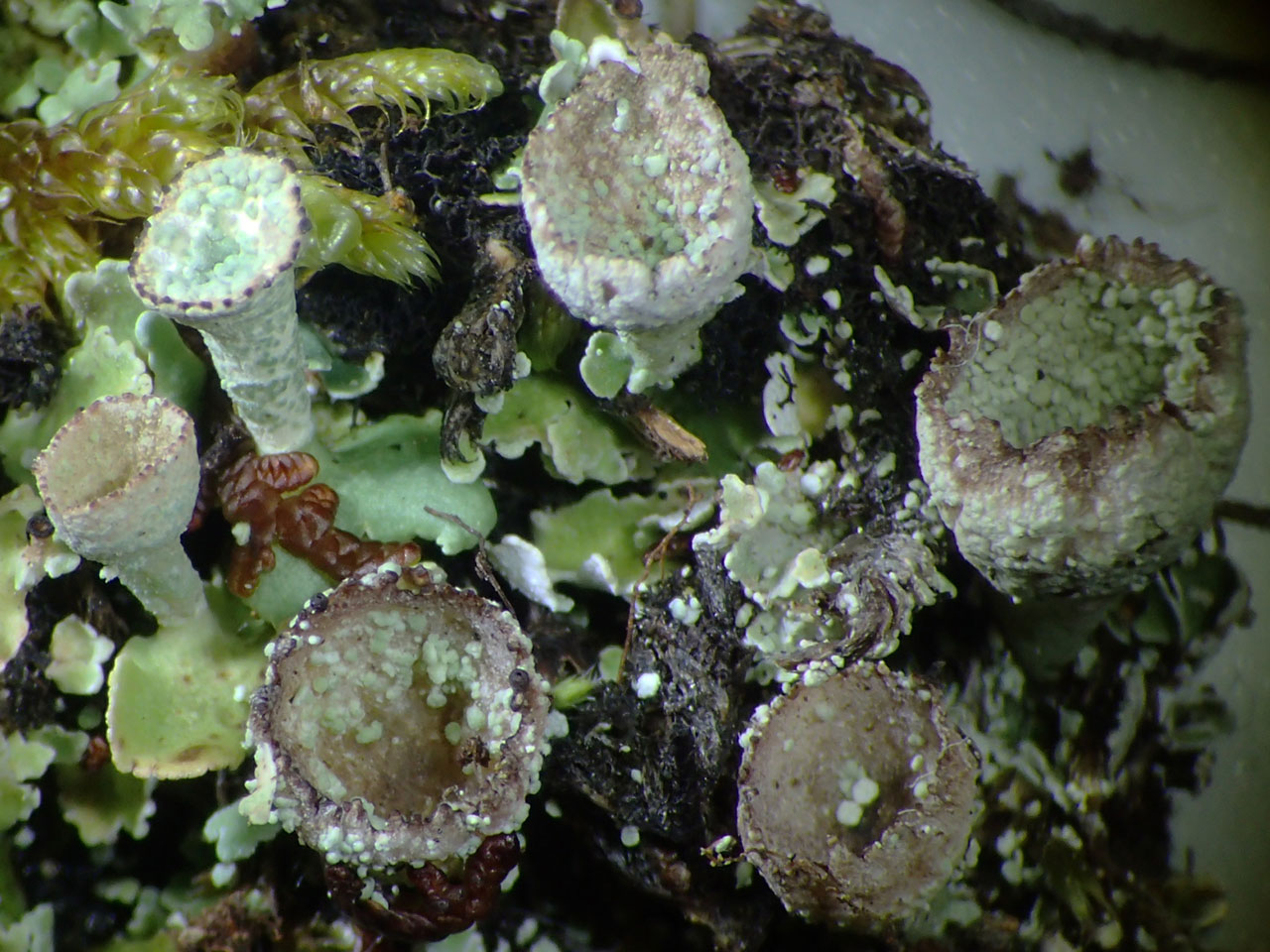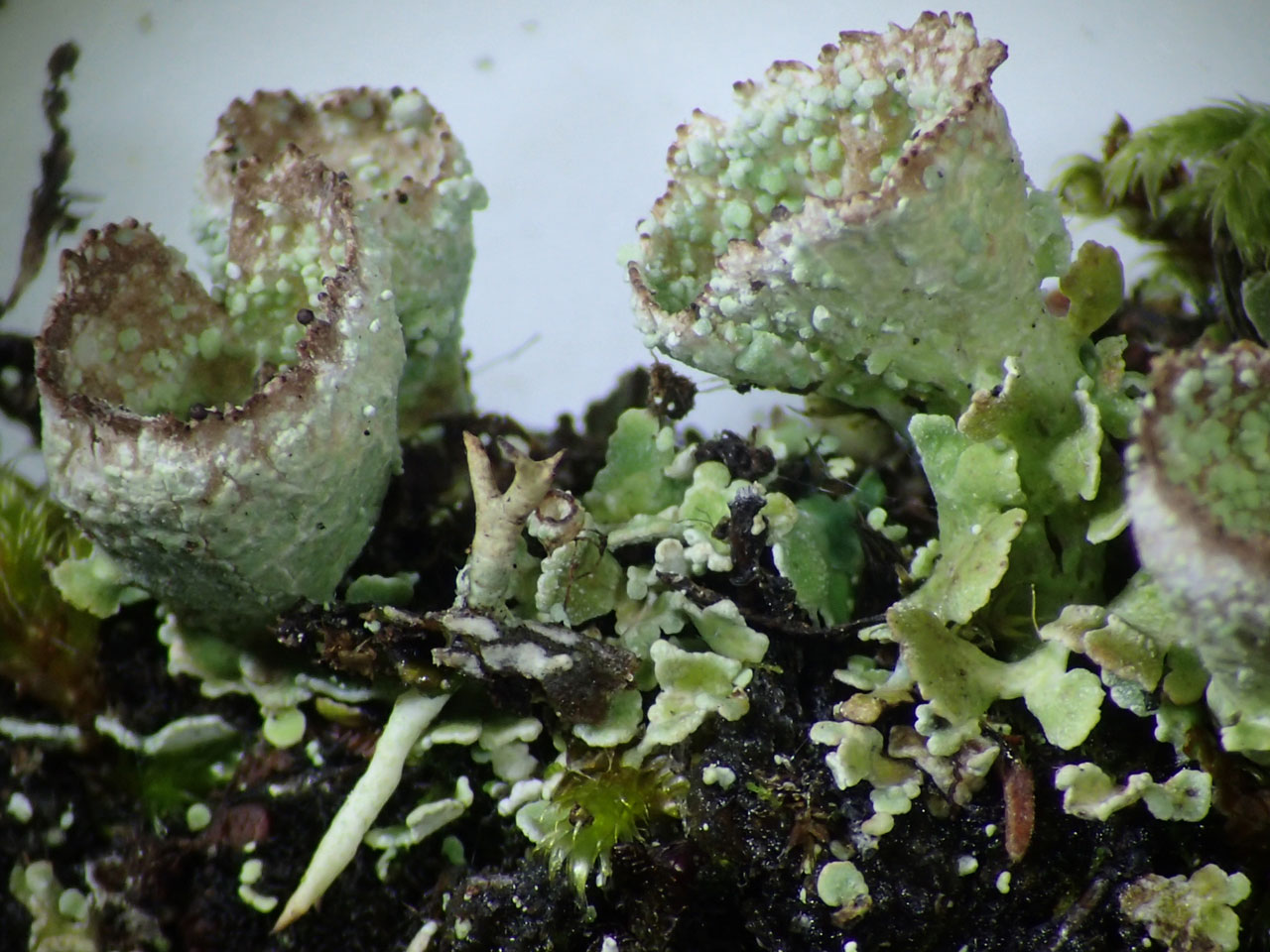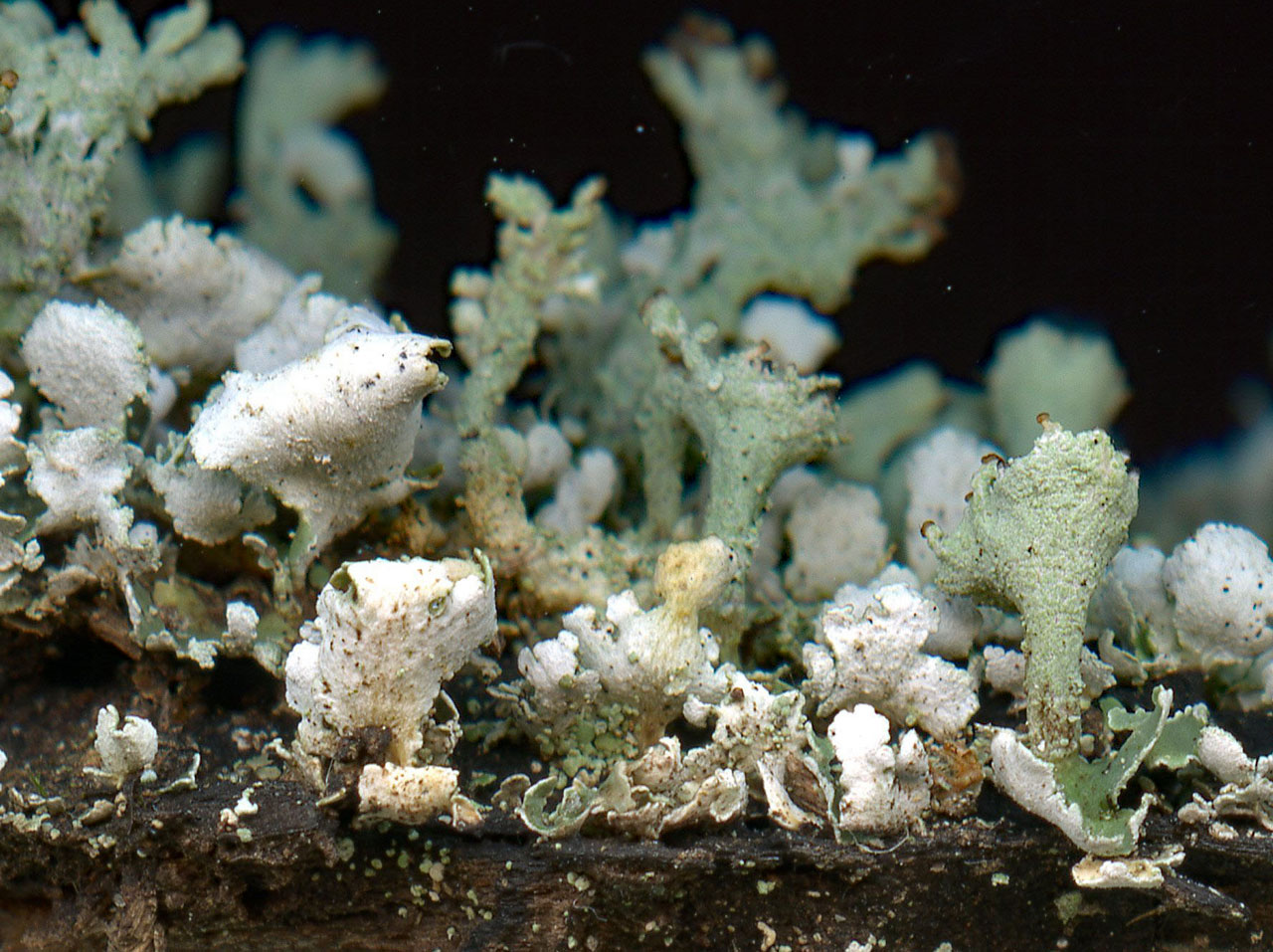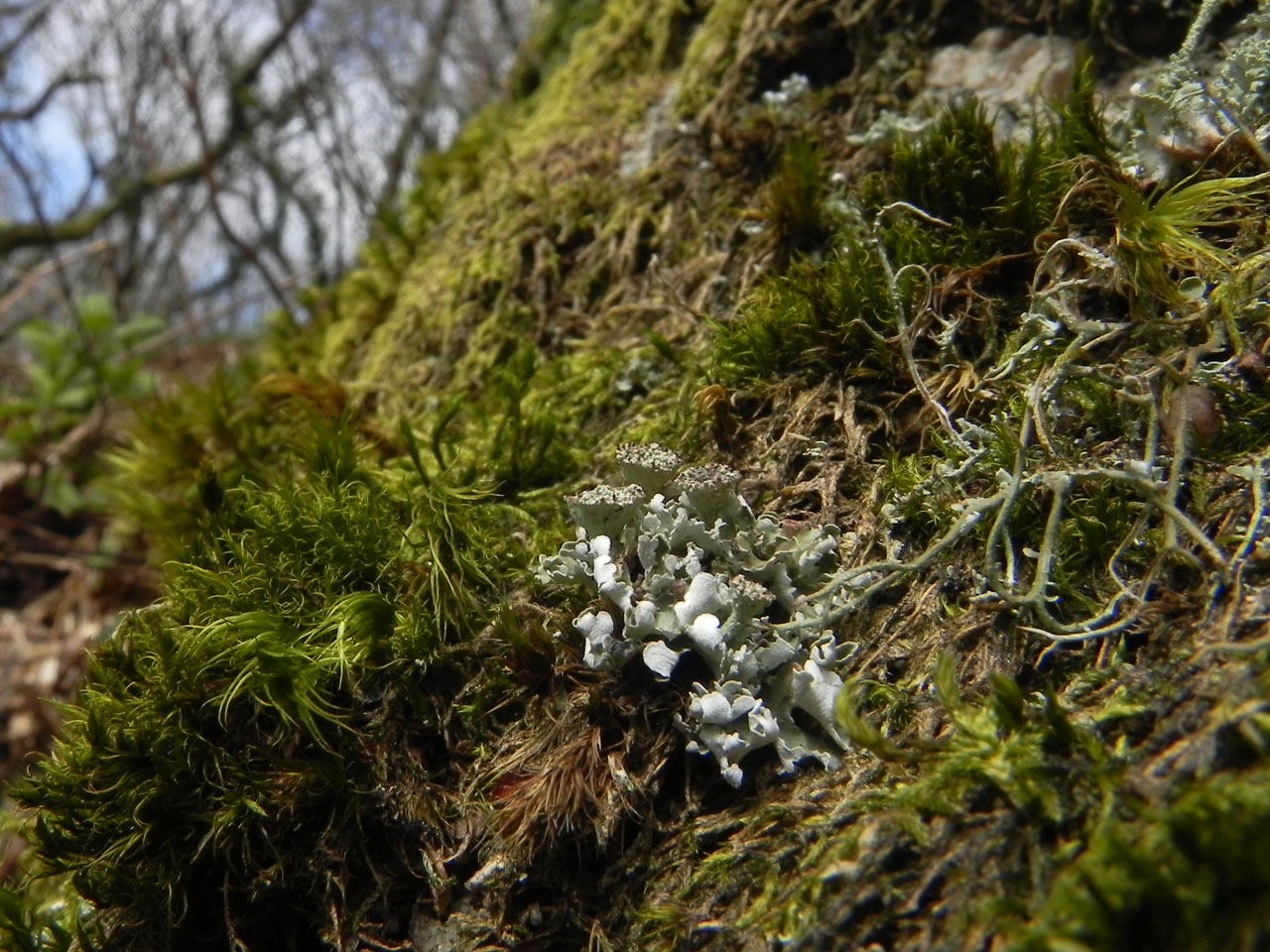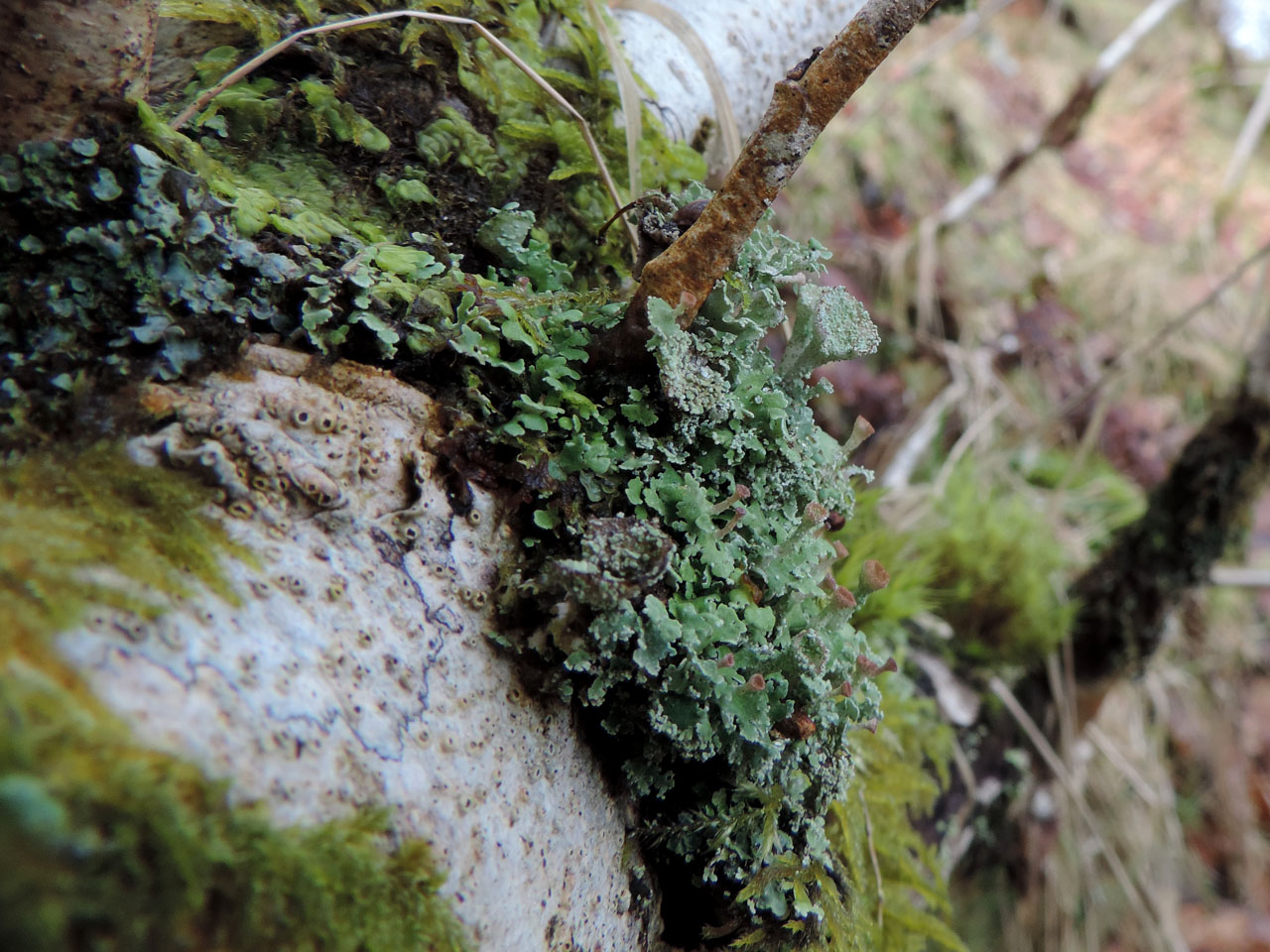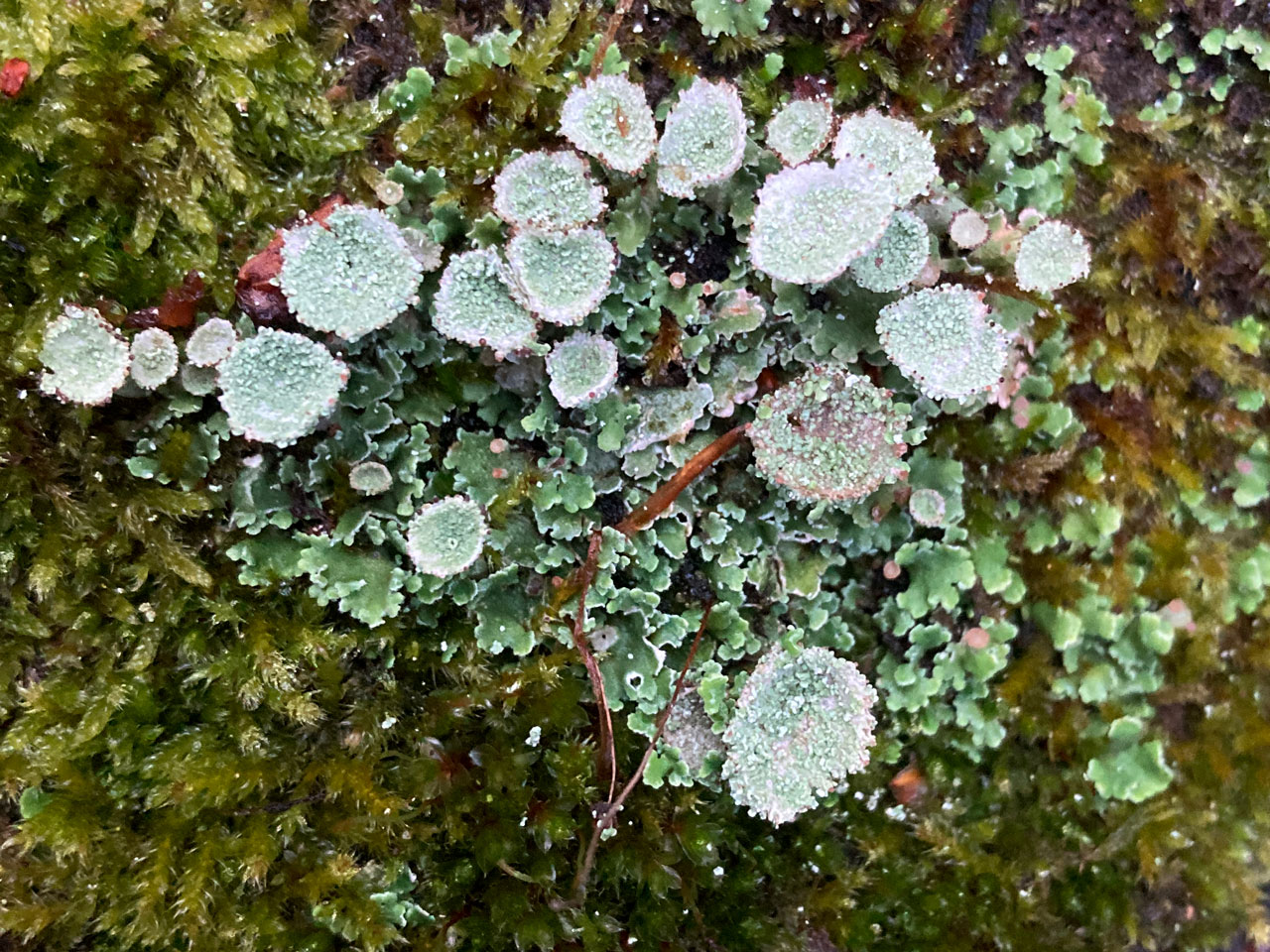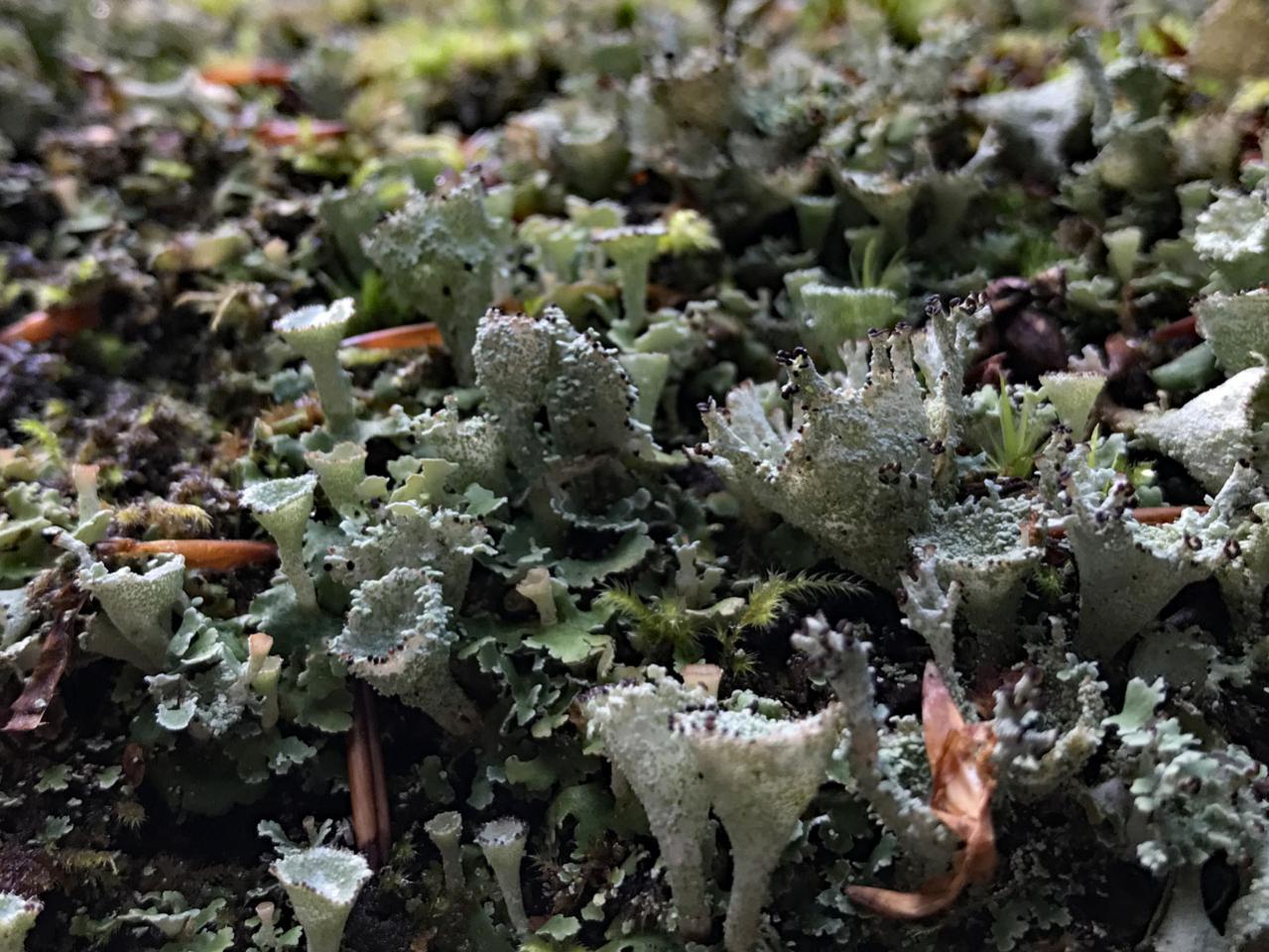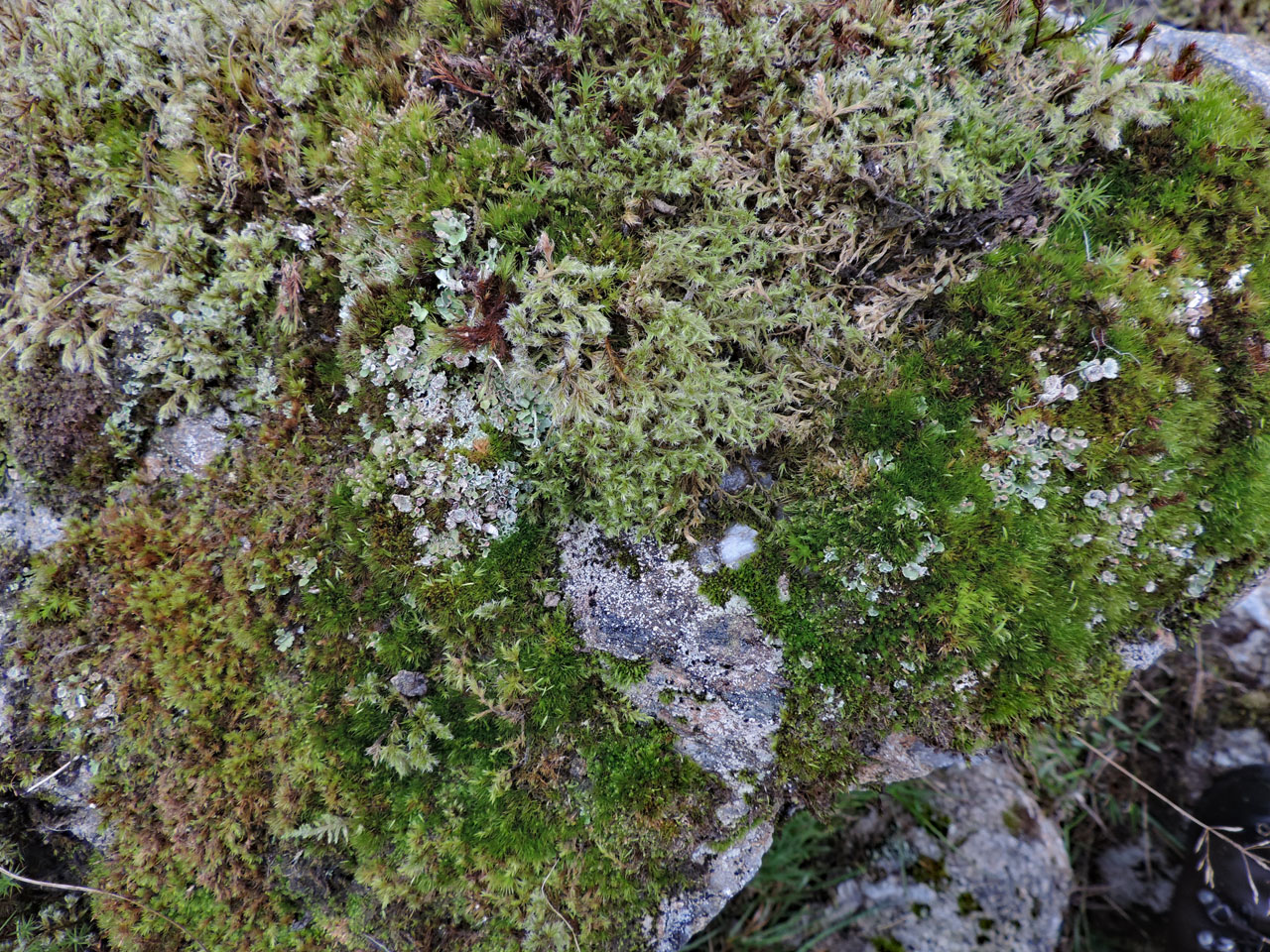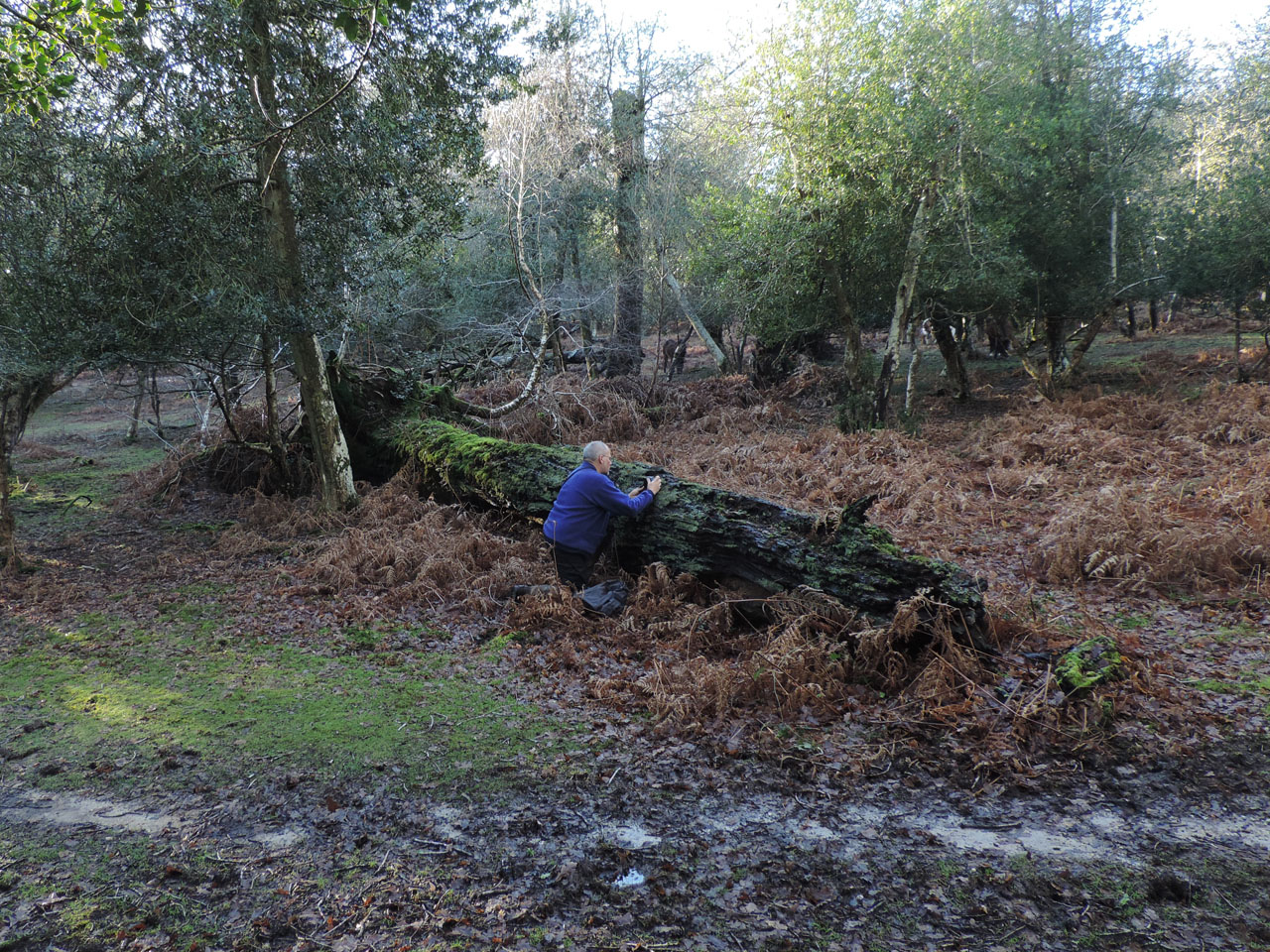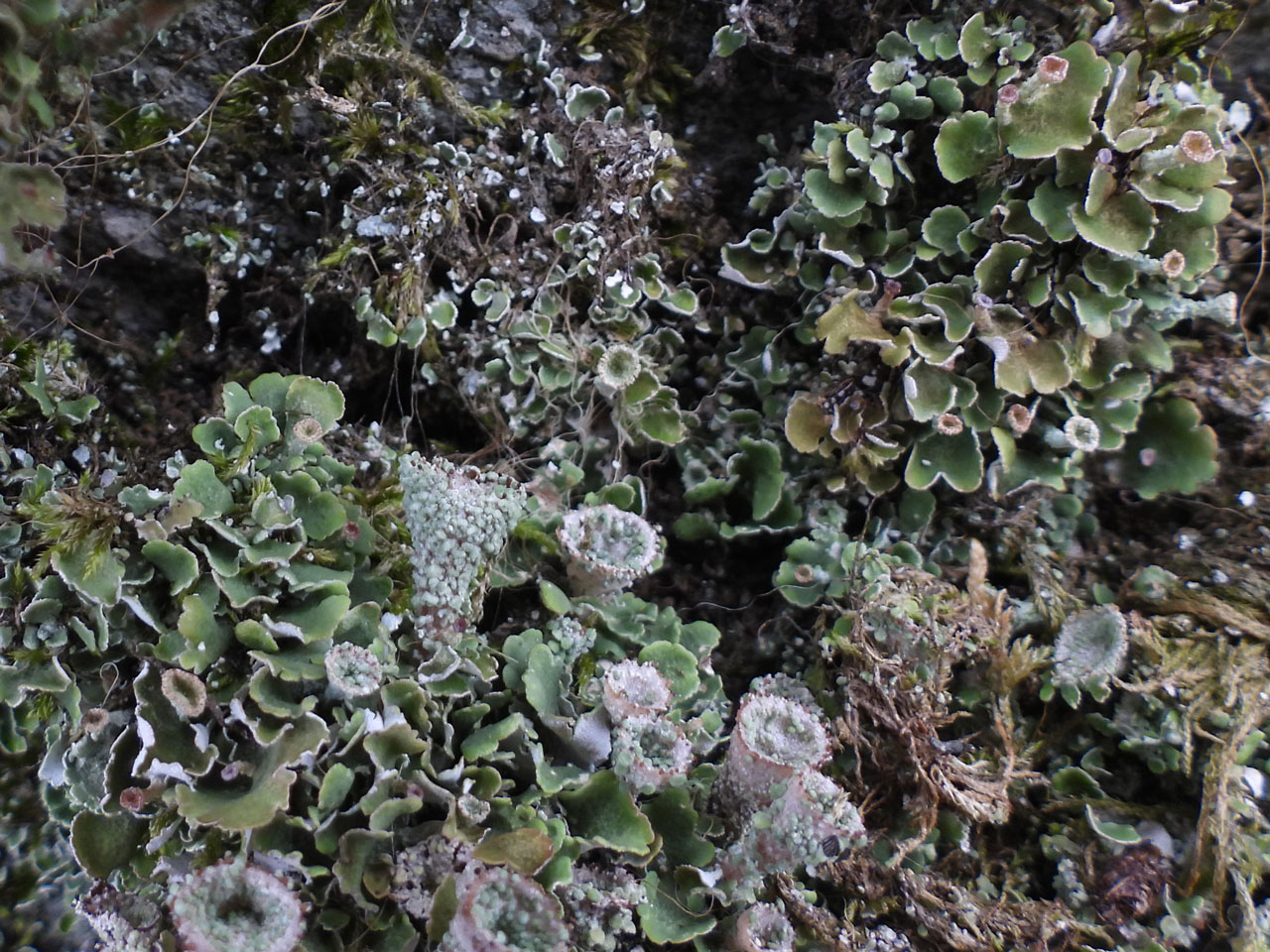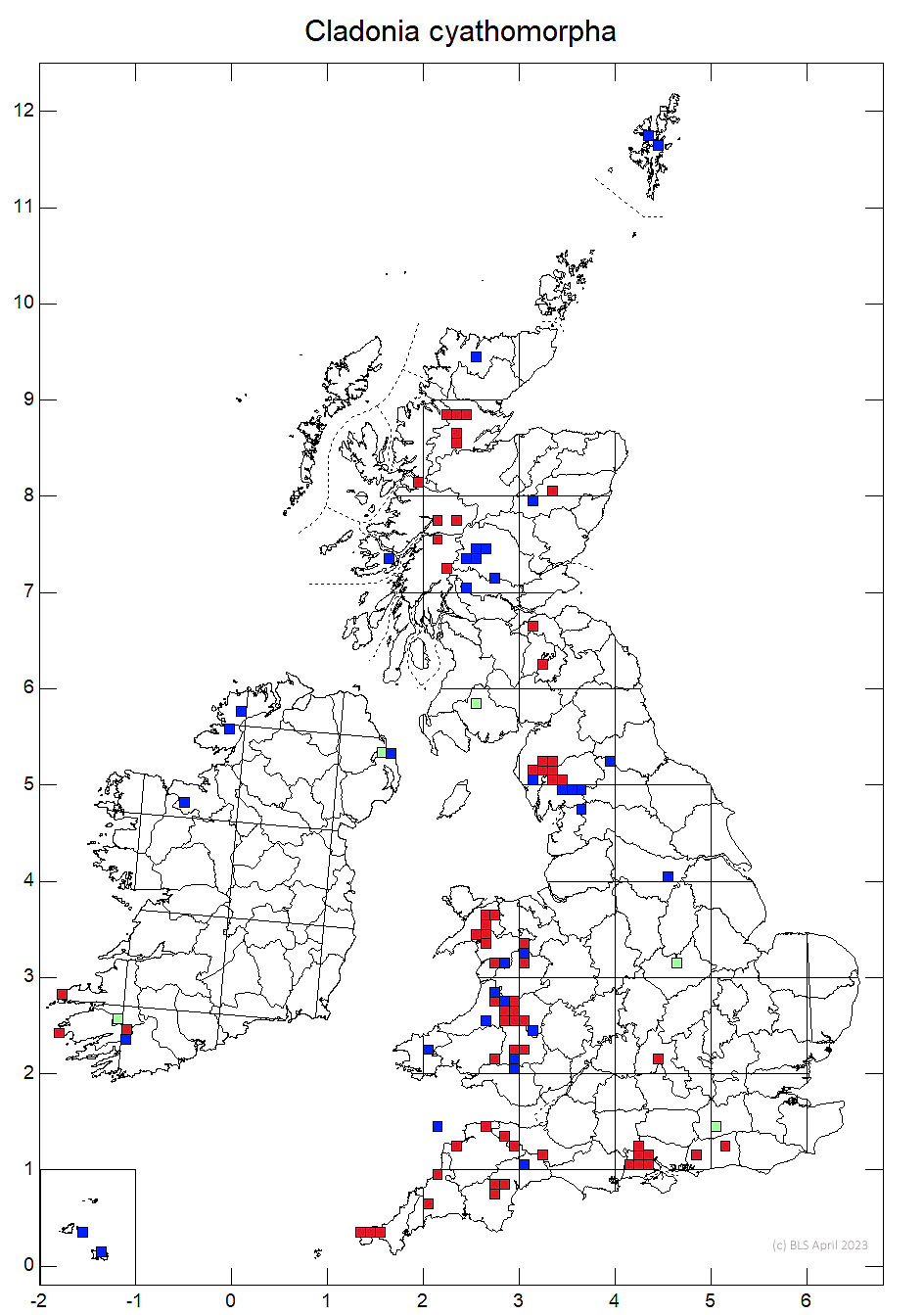Cladonia cyathomorpha
A grey-green Pixiecup with large squamules with white veined undersides and podetia with cups with corticate granules. The granules are largely confined to the inside of the cup with a mostly verrucose outer surface. Found in sheltered and humid locations on acid mossy rocks and the trunks of older trees. Under recorded but likely to be frequent in the upland and scattered and infrequent in the lowlands. A Notable species.
Podetia to 0.8 cm tall, gradually tapering to form a cup, coarsely corticate-granular within, ± smooth to verrucose outside; marginal proliferations infrequent but intricate and baroque when well-developed. Basal squamules dominant, 5–10 mm diam., ± rounded, indented, sometimes flat, often upwardly recurved at the margins and becoming ± erect when dry; upper surface grey-green; lower surface white with raised, frequently with palmately arranged white to yellow-brown veins radiating from their point of attachment. Apothecia and pycnidia brown, on scyphus rims. Apothecia very rare; pycnidia frequent. Thallus C–, K–, KC–, Pd+ red, UV– (fumarprotocetraric acid).
When well-developed, characterized by the large squamules with pronounced radiating ± raised white to yellow-brown venation on the lower surface. Differs from C. pyxidata in having larger, veined, basal squamules, podetia with smaller corticate granules that are largely confined to the inside of the cup with a mostly verrucose outer surface. Cladonia pyxidata has frequent corticate granules on the podetia as well as inside the cup and small more dissected basal squamules. Stunted material on bark cannot be separated from poorly grown C. pyxidata, but the latter is confined to base-rich bark.
On damp mossy acid bark of older trees, miost fallen dead wood, especially large diameter fall Beech trunks once well rotted, and of damp, mossy non-calcareous rocks and walls, rarely on mossy ground or humus, usually near saxicolous or epiphytic habitats, mainly in hilly and montane districts, possibly only on older trees and woodlands in the lowlands.

Likely to be very under recorded so the full distribution unclear, but probably widespread and locally frequent in the uplands, but uncommon in the lowlands.
Britain: Notable
Pino-Bodas, R., Sanderson, N., Cannon, P., Aptroot, A., Coppins, B., Orange, A. & Simkin, J. (2021). Lecanorales: Cladoniaceae, including the genera Cladonia, Pilophorus and Pycnothelia. Revisions of British and Irish Lichens 19: 1-45. Link
Text by Neil A Sanderson, based on Pino-Bodas et al (2021)
